The Niece Asked: 'Can We Fix Eitan Like We Fixed the Tank?'
Just within the thirty days following Eitan Fish's passing, his family prepared an emotional film about his life, documented through the eyes of his young nieces and nephews. Eitan's mother and her two sisters share about this unique project and how it connects to the murder of Ido Zoldan, may his memory be a blessing, sixteen years ago.
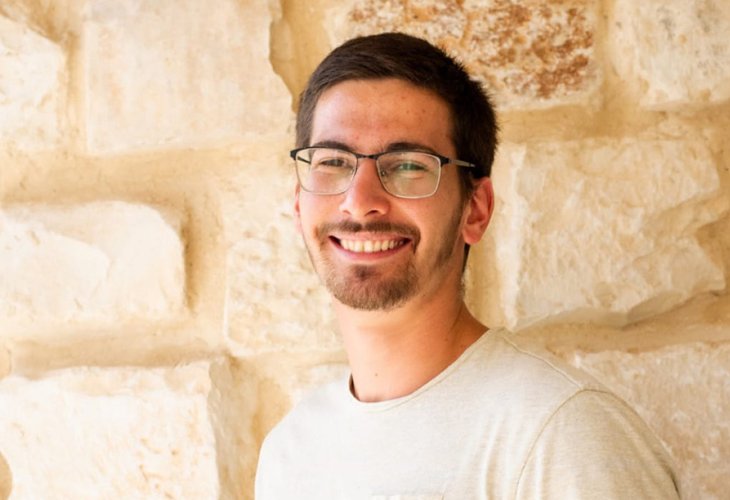 Eitan Fish, of blessed memory
Eitan Fish, of blessed memoryOn the 21st of Kislev, Eitan Fish's name, aged 23, appeared under the unbearable headline "Permitted for publication" of that day. The following day, his funeral was held in Peduel, and his parents and seven siblings prepared to sit for Shabbat Shiva. Even amidst this heavy tragedy, with all the grief and pain, Eitan's parents, David and Chaya, knew one crucial thing—they wanted to document Eitan's memory, to commemorate him in a documentary film that would accompany the family for years to come.
The decision was not accidental. Chaya Fish is the sister of Naomi HaEitan, who has been managing, along with her husband Amatzia, the 'Etrog Studios' for thirty years, where they also produce memorial films. Thanks to this, there is a high awareness of the importance of commemoration within the family. "A few hours before Eitan's funeral, Chaya called me and asked if I would be responsible for the documentation," Naomi recounts. "It was clear to me that this was our task, and we really managed to do the unthinkable when, within a week, a memorial site for Eitan was established, and by the end of the thirty days, a memorial film was ready. It wasn't easy at all, but there's no doubt that its importance is immense. The closer you do the commemoration to the loss, the more fresh and real everything is."
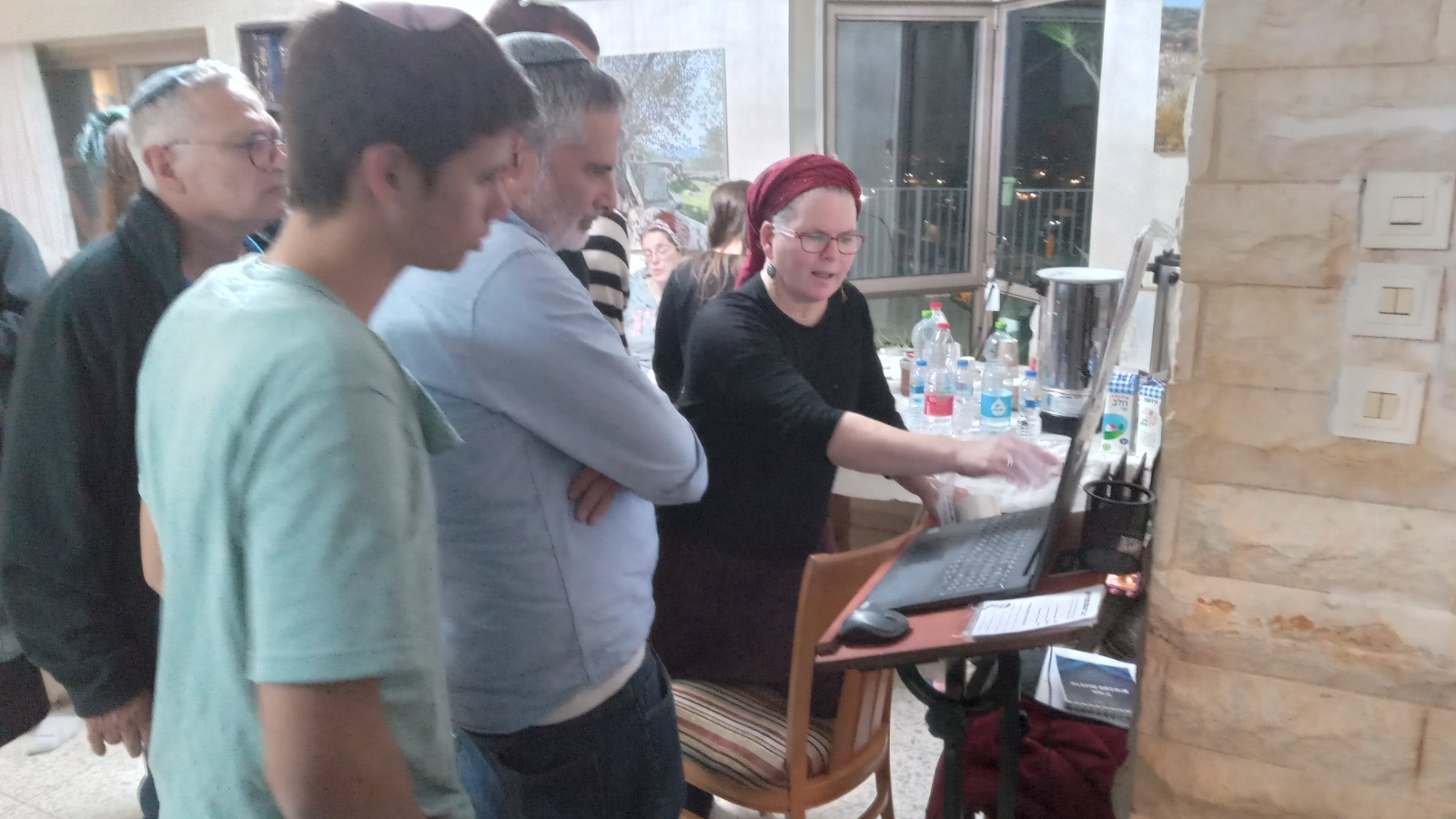 Naomi HaEitan in the mourning corner at the Fish family home
Naomi HaEitan in the mourning corner at the Fish family home
Documenting Through the Eyes of the Grandchildren
We have the conversation with Chaya Fish, Eitan's mother, a few days after the end of the thirty days. "I know it sounds unbelievable," she notes, "but three days after we got up from the Shiva, we already met with Amatzia and Naomi to discuss documentation through the film. From the very first moment, it was clear to us that we wanted to document Eitan from the eyes of our grandchildren—his nephews, who had an extraordinary connection to him. It was a rare and very unusual bond, as if all his life he was waiting to be an uncle."
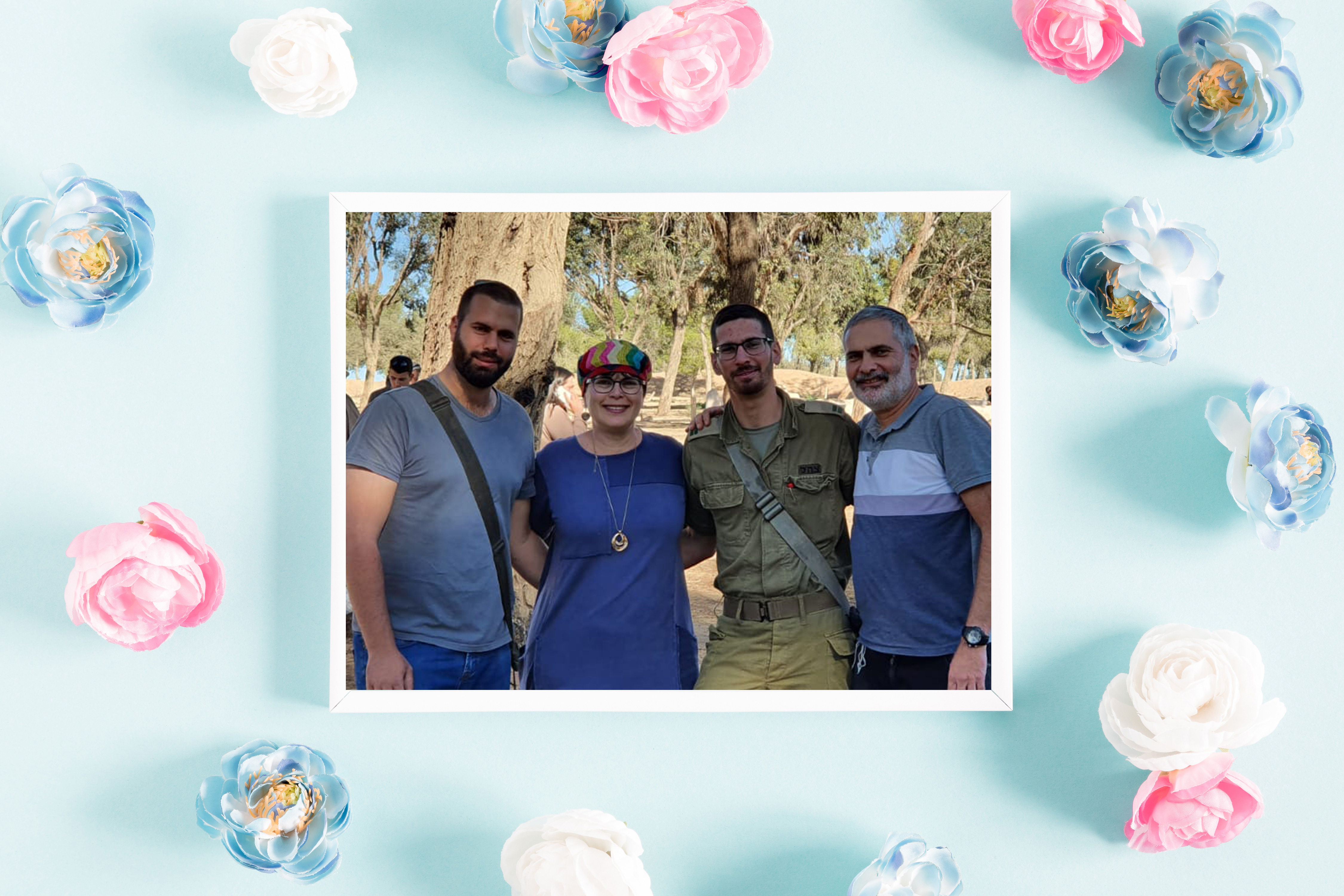 David and Chaya Fish with their children
David and Chaya Fish with their childrenChaya notes that even during the Shiva, they showed the grandchildren pictures of Eitan, and it was moving to hear their reactions. "But the moment that illustrated the need for documentation more than anything," she recalls, "was when I showed a photo of the last meeting we had, just four days before Eitan fell, to a one-year and nine-month-old grandson. He couldn't even speak properly, barely uttering fragments of words, yet when he saw the picture, he started clicking his tongue like a horse. It took time until I remembered that horses had passed by us at that meeting, and that's what he remembered. At that moment, I began to realize that now the child has memories, but in a month or two, he won't remember anything, and even the older grandchildren will hardly remember. They might remember Eitan's figure, but the situations they experienced will blend with the stories they'll hear, making it hard for them to differentiate. Therefore, it was clear that we wanted to document the children's tender memories specifically."
Wasn't it emotionally difficult to sit down with the grandchildren for such a task?
"It was difficult," Chaya admits, "not only emotionally but also physically. We were after the Shiva, and our bodies were tired and exhausted. We weren't prepared to engage with materials and documentation, but the goal was so important to us, and we felt we had to do it."
In practice, Chaya explains that they let the children play different games and engage in activities Eitan used to do, while encouraging them to talk about their beloved uncle. "For example, we let them build with Lego, and they talked about the creations Eitan built. When they assembled puzzles, they were amazed to recount that he completed a 3000-piece puzzle. We also went outside to play basketball with them and talked about his basketball games. We developed a variety of topics, all stemming from the world of the children—the little ones."
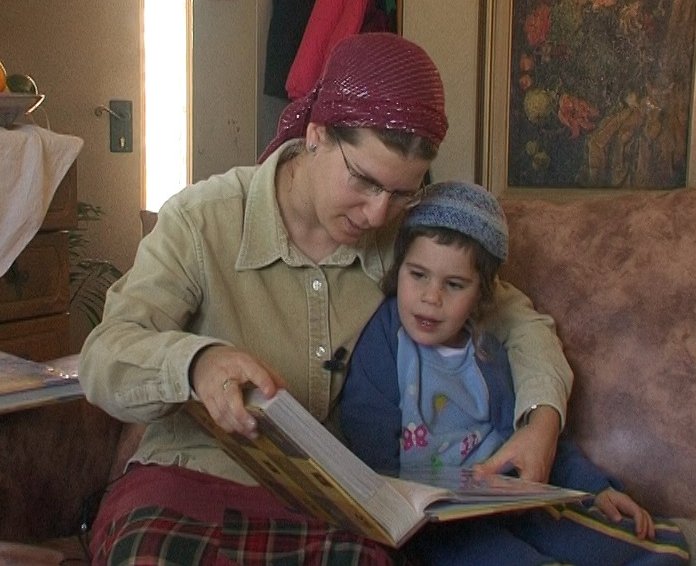 Aharon Zoldan after the Shiva for his father, filmed for the memorial film, with his mother Tehilla
Aharon Zoldan after the Shiva for his father, filmed for the memorial film, with his mother TehillaOne of the moments in the film that particularly moved Chaya was when her daughter-in-law shared that she told her children the tank in which Eitan was during the war was sent for repair. Her five-year-old daughter responded: "Mom, can we fix Eitan too?"
Do you think the grandchildren really understand what happened to Eitan?
"No, they are still young; the oldest is just five years old, and it's clear to us that they don't fully understand. But we're trying to illustrate it to them in various ways. Among other things, we're telling them a lot about what Eitan did in the army, using terms from their world, like talking about a 'rescue unit' and so on. It's important for us that they understand what he did and that he was involved in saving lives. These are messages we want to accompany them always."
You sound so strong. Where do these strengths come from?
"The main thing that gives me strength is the clear knowledge that Eitan went to the army out of the belief that this is what he needed to do, even though he missed the circumcision of a nephew, getting called away 20 minutes before the event began. He simply got up, disappeared, and drove off. I said to him when saying goodbye in the parking lot: 'You're not thinking about anyone—not me or your dad—you're focused entirely on the goal and doing what needs to be done, because it's a privilege to take part in a holy war in this land.' Later, my husband asked him, 'Aren't you sorry you missed the circumcision?' But Eitan replied, 'No, Dad, this is the mission we've trained for, that we've practiced for, and this is what we need to do.' He left with a smile from ear to ear, simply happy. We will continue that happiness, not give anyone the feeling that we are weak, but continue and fight until the task is completed."
Documenting Ido
The film Amatzia and Naomi produced about their nephew Eitan is not the first one they made for a close family member. The previous time they worked on a similar project was about 16 years ago, when Tehilla, Naomi's younger sister, was widowed after her husband, Ido Zoldan, may his memory be a blessing, was murdered in a shooting attack.
"When Ido was murdered, I was left with two young children," recalls Tehilla. "The oldest was just three years and two months old, right after the *chalaka* celebrations, and the youngest was 11 months old. In those days, I was very preoccupied with the thought of what they would remember of their father. I assumed the youngest wouldn't remember anything, but I wondered if the eldest would have any memories. After all, the father was so present in his life, leaving many experiences imprinted on him. Would any of this remain in the future? I tried to recall my earliest childhood memories and realized they revolve around the age of four. Even then, it's only one or two significant and strong cases. Regrettably, I understood he wouldn't remember much, and I felt I wanted him to have a living memory, where he himself speaks about his father."
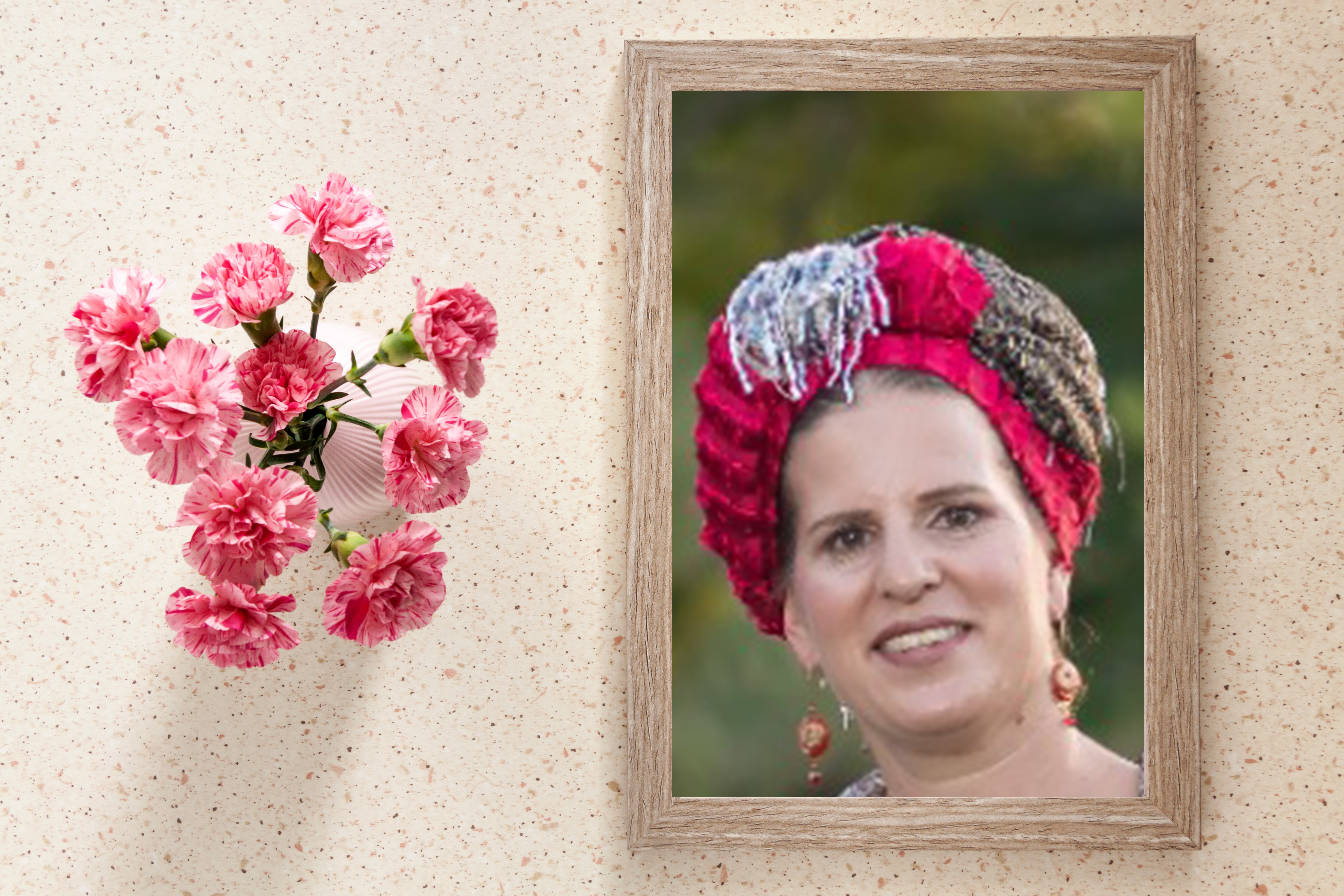 Tehilla Dvir (Photo: Reut Kornberg)
Tehilla Dvir (Photo: Reut Kornberg)The continuation was natural for her: "Within the thirty days, we sat with the child in my sister's living room and opened albums with *chalaka* photos. We started questioning and encouraging the child to share: 'What did Dad do with you?' 'How did he lift you after a bath?' and various directed questions. But the truth is, he didn’t need them, because he told us stories on his own, and this is a film that accompanies him to this day. Incidentally, a few years later, my mother-in-law took the reins and produced a broader film with friends from various circles, asking where Ido touched them, with memories from the army and the yeshiva. That is no less important, but in the personal and intimate family circle, I know the greatest value we got was from the film where we recorded the child right after the Shiva."
Honestly, wasn't it difficult and emotionally overwhelming?
"It was difficult, but it happened on its own, in such a natural way. Within the thirty days, Ido was still present among us; he was a part of us, and so the documentation process happened almost on its own."
Tehilla also wants to highlight: "Blessed be Hashem, we were able to rebuild after the attack and received many gifts from the Holy One, blessed be He. About two years later, I married a wonderful single man named Gilad, and through hard work, we were blessed to build a happy, loving, and living home. Five children were born to us, and we live alongside the memory and longing that occasionally flood us, but the joy of life outweighs, and the good and light fill us with divine assistance and great strength."
Not Really Saying Goodbye
"From our experience, we know how important it is to create a memorial film as close as possible to the loss," explains Naomi. "It's not that you can't do it later. But when we come to document a person from the perspective of many years, we usually don't hear memories, but rather more stories that have been preserved over time about them. For example, a woman came to us who was an orphan from the Yom Kippur War when she was ten months old at the time of the war and asked us to make a memorial film about her father. We undertook the task, but in the end, when we showed her the result, she felt uncomfortable. 'My father was a funny man,' she eventually said, 'and nobody told me that.' It turned out that throughout her life, she knew her father mainly from his picture on the wall, where he indeed smiled, and that's how she imagined him—a funny man, but in reality, her father was actually very serious and studious. These were facts she only learned around the age of 40, and then I truly understood the meaning of a memory you seemingly invent for yourself because you don’t have other data to rely on."
And when do family members typically reach out when they want documentation?
"Very few people can mentally handle doing it so close to the loss," Naomi replies, "but recently, we had someone who contacted us during the Shiva and asked us to come document on site. When Amatzia marveled and asked him: 'You want to be filmed with stubble and torn clothes?' he answered him: 'Yes, it's the most authentic because everyone is together now and talking about Dad. If we want to document later, it won’t be the same.' So that’s what we did, but generally, most people produce memorial films in time for the anniversary."
We want to remember our loved one joyful and smiling, yet these films are inherently sad?
"Amatzia always says that 'a good memorial film is one that you laugh when you watch it,'" Naomi quotes, "and it's very true and accurate. Even in the film we made about Eitan, there were moments of laughter, which does not in any way contradict the deep mourning. A memorial film by nature is supposed to reflect life, and if the person spoken about was humorous or had a sense of humor, the film can definitely be amusing. Still, it's okay to cry in the film and show people crying while they speak. You don't cry necessarily because you're sad; you cry because you're remembering and longing. When you feel longing, it indicates that your beloved one is still alive in your heart, that you're not really saying goodbye."

